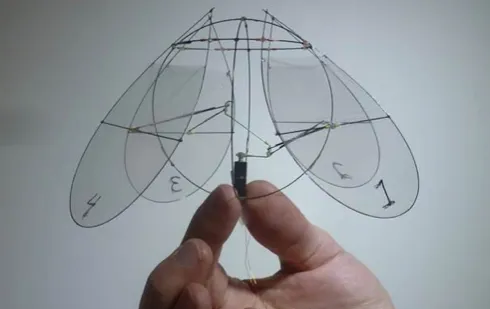Is it a bird? Is it a plane? No… it’s a flying jellyfish! In a bid to create a new kind of flying robot, scientists in the US have sought inspiration from an unlikely source. Their vehicle flaps its wings in a way that recalls the pulsating swimming motions of jellyfish – creatures that are more at home in the water than in the air.

Most previous aerial robots have been engineered to mirror the movements of creatures that can actually fly. However, it has proved difficult to mimic the complex engineering that nature has mastered through millions of years of evolution. For example, robots that are inspired by insects such as fruit flies have to continually adjust their flying motion to respond to changes in the wind. Recreating this complex control in such a small mechanism is tricky.
By turning logic on its head and basing their design on a sea creature, Leif Ristroph and colleagues at New York University have come up with a solution. Their design operates without the need for any control system. Four identical petals flap simultaneously, creating a jellyfish-like pulsating effect and generating enough force to lift the two-gramme system.
In time, these flying jellyfish could be used to monitor air pollution in smog-ridden cities. If thousands of these robots were released around a city such as London, they could measure local air quality levels to produce a detailed picture of the urban environment. Another potential application could be within the controversial drone market, where tiny aerial objects can be used for surveillance.
The fledgling robot is still in the prototype stage, but the principle behind the device may be the basis of even smaller, more sophisticated vehicles. Scientists have long known that sometimes the best way to solve a problem is to strip the technology back to its most basic level, and Ristroph believes that the simplicity of their design bodes well for miniaturising the vehicles. “Ours is one of the simplest, in that it just uses flapping wings,” he says.
By Natalie Keir
Follow Science Focus onTwitter,Facebook, Instagramand Flipboard
